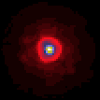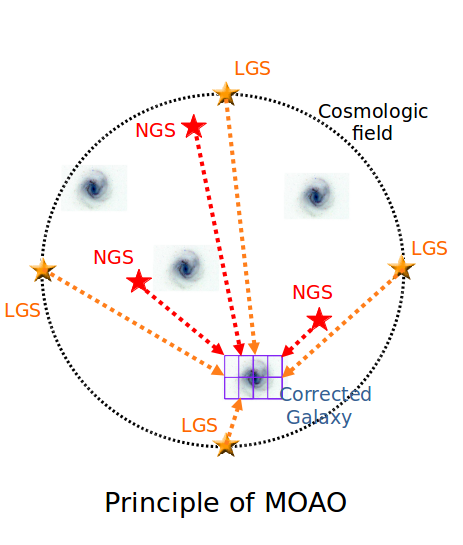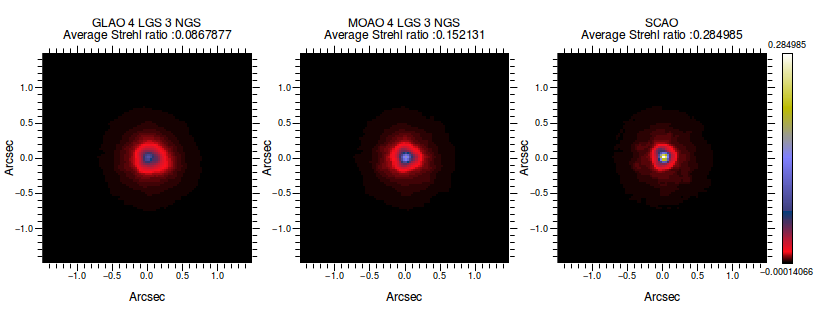 A broad range of science cases for multi-object spectroscopy on the ELT demand better angular resolution than typically obtained from astronomical seeing, requiring the use of adaptive optics (AO) over fields of view of several arcminutes on the sky. A broad range of science cases for multi-object spectroscopy on the ELT demand better angular resolution than typically obtained from astronomical seeing, requiring the use of adaptive optics (AO) over fields of view of several arcminutes on the sky. | ||
 The target MOSAIC fields are very wide (5 to 10 arcmin) on the sky preventing a conventional approach to AO - with a deformable mirror compensating for the whole field of view - to be conducted. Moreover, problems quickly arise if trying to use several deformable mirrors in sequence (as in multi-conjugate AO) because of conservation of the beam etendue across such a large field. However, only the individual targets of interest (be they galaxies or groups of stars) need to be corrected in this wide field, i.e. islands of 1-2 arcsec, and not the whole continuous field. The concept of multi-object AO (MOAO) employs dedicated deformable mirrors in each observing channel, to correct for the turbulence in that specific direction. This configuration is new in AO because the wave-front sensors do not see the correction obtained from the various deformable mirrors. This means we are in an open-loop contral scheme, in contrast to the robustness in conventional AO obtained from closed-loop control.
The target MOSAIC fields are very wide (5 to 10 arcmin) on the sky preventing a conventional approach to AO - with a deformable mirror compensating for the whole field of view - to be conducted. Moreover, problems quickly arise if trying to use several deformable mirrors in sequence (as in multi-conjugate AO) because of conservation of the beam etendue across such a large field. However, only the individual targets of interest (be they galaxies or groups of stars) need to be corrected in this wide field, i.e. islands of 1-2 arcsec, and not the whole continuous field. The concept of multi-object AO (MOAO) employs dedicated deformable mirrors in each observing channel, to correct for the turbulence in that specific direction. This configuration is new in AO because the wave-front sensors do not see the correction obtained from the various deformable mirrors. This means we are in an open-loop contral scheme, in contrast to the robustness in conventional AO obtained from closed-loop control.
An important activity over the past decade has been to raise the technology-readiness level of this open-loop technique compared to closed-loop AO. Since 2010, the CANARY project has demonstrated MOAO on sky using the William Herschel Telescope in La Palma. At first using only NGS, but then using both NGS and LGS, implementing both tomography of the atmosphere and open-loop control. CANARY has even demonstrated MOAO in the ELT configuration, with a deformable mirror common to all objects (mimicking M4, delivering a correction comparable to ground-layer AO in closed loop), with MOAO correction enabled by an open-loop deformable mirror dedicated to the object of interest. The CANARY tests have allowed validation of numerical simulations of MOAO, and have achieved performance close to that of conventional AO (on axis, in closed loop), i.e. much better correction than expected from only a ground-layer system.

This on-sky validation has therefore led to the selection of MOAO for the MOSAIC concept. It will provide correction for 10 separate object fields, using measurements from 4-6 LGS and 3-5 NGS within the the much larger (5-10 arcmin) patrol field seen by the instrument. The teams responsible for the study and design of this AO system are those who developed and operated the CANARY pathfinder.
